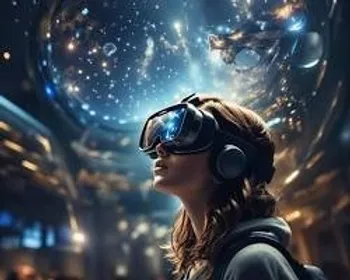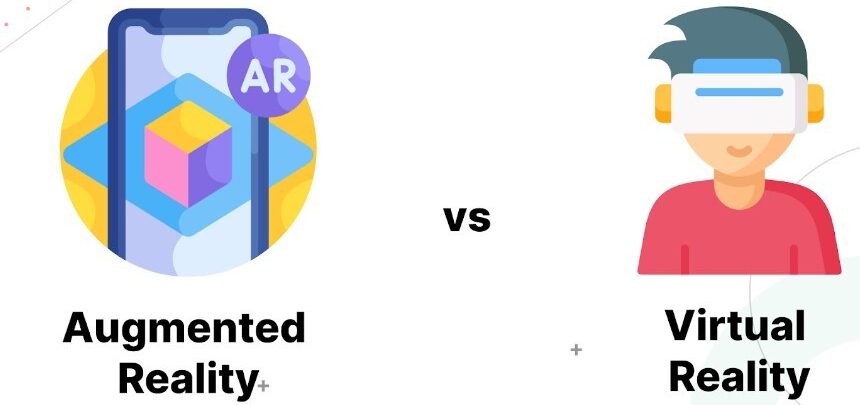Augmented Reality (AR) and Virtual Reality (VR) are two emerging technologies rapidly changing how we interact with the world around us.
Augmented Reality (AR)
AR is a technology that superimposes a computer-generated image on a user’s view of the real world, thus providing a composite view. AR can be used to enhance the user’s experience by providing additional information or overlays. For example, AR can be used to:
Provide directions to a destination
Overlay product information on a real-world object
Allow users to try on virtual clothing or furniture
Play games that interact with the real world
Virtual Reality (VR)

VR is a technology that creates an immersive, computer-generated environment that simulates the user’s physical presence in a virtual world. VR can be used to:
Train people in dangerous or difficult situations
Provide entertainment, such as games and movies
Allow people to experience different places and cultures without having to travel
- Help people with disabilities to experience the world in new ways
Key Differences between AR and VR
Environment: AR overlays a virtual image on the real world, while VR creates a completely virtual environment.
User awareness: AR users are aware of their surroundings, while VR users are immersed in the virtual world and may not be aware of their surroundings.
Device requirements: AR can be used with a variety of devices, such as smartphones, tablets, and glasses. VR typically requires a headset.
Applications of AR and VR
AR and VR are being used in a variety of industries, including:
Education: AR and VR can be used to create interactive learning experiences that allow students to explore concepts in a more immersive way.
Training: AR and VR can be used to train people in dangerous or difficult situations, such as firefighters and surgeons.
Entertainment: AR and VR are being used to create new and immersive gaming experiences.
Healthcare: AR and VR are being used to help with pain management, rehabilitation, and mental health treatment.
Retail: AR and VR can be used to allow customers to try on virtual products or see how furniture would look in their homes.
Tourism: AR and VR can be used to provide tourists with information about their surroundings and allow them to experience different places without having to travel.
The Future of AR and VR
AR and VR are still in their early stages of development, but they have the potential to revolutionize the way we live and work. As the technology continues to develop, we can expect to see even more innovative and transformative applications of AR and VR.
In addition to the applications mentioned above, AR and VR also have the potential to:
Improve communication and collaboration
Enhance education and training
Provide new forms of entertainment
Improve healthcare
Revolutionize the way we work and interact with the world around us.
Please Comment your thoughts Below.




